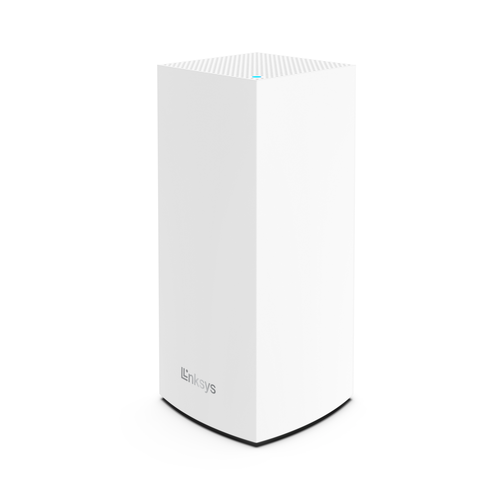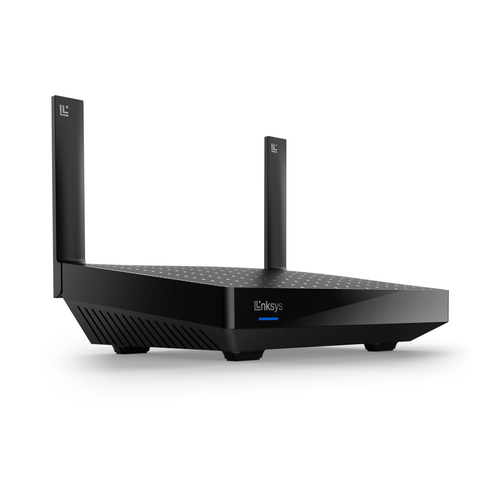A Parent Guide to Online Safety for Children

Parents strive to create a safe, physical environment for their children. The digital world, however, is not always as easy to secure.
Thanks to the advent of ubiquitous high-speed broadband over recent decades, the family computer is present in most households and is supplemented by mobile devices like laptops, smartphones and tablets, in addition to gaming systems, smart TVs and other devices that are all connect to the home WiFi network. Though these technologies have their benefits, the digital world—like the physical world—contains threats. Hackers, cybercriminals and predators are dangers parents must ensure their children are protected against when using the internet.
A defense strategy for parents is essential, but where to begin?
Treat Online Safety as Risk Management for Your Children
While the threats may be different in a home environment compared to a company, the approach needed to protect children is similar to that of employees and a business. Parents assume the role of network administrator in this case, motivated by the desire to ensure their children's safety in an online environment.
Gather Information
Parents must learn about online safety protocols if they are to protect their homes. Luckily, they don't need to return to school, as there are many resources available.
“Groups, sites, and apps provide education on cybersecurity and online safety for parents," says Myla Pilao, Director, Core Technology Marketing, Trend Micro. "A quick search for advice and tools for families, teachers, schools and parents can reveal communities, groups and organizations that can help increase awareness. One example is the global initiative for online safety education called Internet Safety for Kids and Families or ISKF, and its goal is to educate and promote awareness of how parents can establish the foundations for online safety and how children can be great digital citizens."
Pilao continues: “Even if parents are not as savvy as their children when it comes to the latest technology, sites or apps, it's important for parents to at least be aware of how these are commonly used. For instance, even if parents themselves don't use social media, it's important that they have an idea of the platforms' features so they [understand] how their children use them."
Given that online safety for children is a global concern, there are several other options for parents seeking information and tips:
The Federal Trade Commission has an entire series of posts on protecting kids online
KidsHealth relays basic but essential internet guidelines for parents
The Internet Watch Foundation protects child victims whose images are put online
Friendly WiFi promotes a safe standard for public Wi-Fi
The National Society for Prevention of Cruelty to Children offers tips on online safety
Knowing the Risks
When parents permit their kids to use the internet without monitoring, they are exposing them to risks.
“The biggest online danger is parents taking a blind eye because they either don't think their children would do something inappropriate or because they aren't educated [about] technology," says Charles Henson, a managing partner at Nashville Computer Inc., a Tennessee-based provider of managed IT services. He stresses that there are countless dangers in allowing children of any age to be online without guidance.
Casual use is also a problem, with kids sometimes spending more time online that interacting in the real world. While accusations of “rotting the brain" was leveled at TV in years past, what is the impact of continuous online use, with beeps, tweets, whistles and vibrations a constant interruption?
"Today's children start using these devices when they can barely hold them," says Henson. "Parents often put their child behind a tablet while fixing dinner. But it doesn't stop there, [parents] do it even when the kid isn't asking for entertainment, like sitting in a shopping cart while they shops."
Is such reliance a good idea?
“Nowadays adults find it convenient to use the internet and mobile technology as the readily available babysitter," says Trend's Pilao. "Nevertheless, their screen time should be monitored via the amount of time they spend online as compared to offline, and apps and sites they are exposed to should be age-appropriate. The same goes for children already in school. Pre-teen ages can be the best time to make them conscious and aware that what they share, visit and search is public and permanent, and that online content can be a mix of good and bad."
Pilao also confirms that Trend Micro has identified an increase in social engineering methods by hackers, who use information available online to gain access to sensitive or PII (personally identifiable information). "Users' social media pages tend to be a source of information for malicious characters online, used to impersonate them, to get more sensitive data like addresses, bank accounts and credit card credentials. Photos can be used to track your whereabouts and find a pattern of when you're home or not, or user accounts can be hijacked to send phishing emails, malware or false information to your contacts. Our information—and our children's information—are available to family and friends. Unfortunately, it's also potentially available to cyberbullies, online criminals, stalkers and trolls."
In light of these modern risks, what actions can parents take?
Take an Inventory
Armed with general knowledge of the potential online risks to children, parents can make a list of all devices that connect to the internet, both wired and wireless.
Consider your internet connection, it may be based on a hard-wired cable to your home (either copper or fiber optic), be bundled with your cable or satellite TV subscription, or simply be limited to mobile broadband from your cellphone carrier. Regardless of the connection type, you will likely be dealing with a router, hub or use a smartphone as a WiFi hotspot (in the case of mobile broadband) to allow other devices to connect. In this instance, you are concerned with all devices that can connect to the internet, such as smart TVs, smart speakers (Alexa, for example), gaming systems and handhelds, and of course, desktops, laptops, tablets and smartphones.
Make a list of all such devices and identify the manufacturer or brand name, model number, operating system (if applicable) and parental control requirements. The operating system will determine the parental control options available. In addition, most internet browsers have a "safe search" option that will filter out many sites that are unsuitable for children.
The Parental Control Options
By employing device-specific solutions and using safe-search options in browsers, many age-inappropriate sites are automatically blocked at the device level.
If you are seeking a quick list of precautions for home networks and devices, consider the following advice from Pilau:
- Before purchasing a device, do some research about its security reputation and features, which information is collected and why, how the collected information is protected, who has access to the information and if you can opt out.
- Frequently change your passwords and make them complicated. Default passwords are easy to access and hackers can use routers and other devices as entry points to steal information, manipulate and control connections and devices, or control other devices.
- Practice good password hygiene. Don't recycle usernames and passwords for multiple accounts.
- Enable network firewalls. This is your first line of defense against attacks.
- Review social media pages' privacy settings and check the permissions you allow in exchange for their use. This determines the amount of personal information you share publicly.
- Use two-factor authentication (2FA) whenever offered. Social media networks offer this feature and can enhance account security. Layered protection is still stronger than just one credential request.
- Consider activating parental controls on the devices your children use to screen the content of the sites and apps they visit and use, as well as set the time limit for internet access.
- Avoid connecting to unsecure public WiFi networks. Hackers within range can use these networks as entry points for manipulation and access.
- Regularly download updates for your device, apps, router firmware and software from legitimate vendors to patch exploitable vulnerabilities.
The Security vs. Privacy Debate
Before taking a hard line on parental control, it is worth considering security versus privacy. Teens value privacy and will find ways around blocks put in place by parents.
“Security and privacy often overlap, but they're not the same thing," says Paul Bischoff, a privacy advocate for Comparitech.com, a UK-based provider of hardware and software reviews and comparisons. "Security can certainly be provided without invading a teen's privacy. As a parent, ask yourself, 'Am I concerned about who can see my kids, or am I concerned about what my kids see?' The former is more of a security concern and you should take steps to reduce your child's digital footprint. The latter will require you to intrude on your child's privacy to some extent, such as parental monitoring software. However, for older kids, I recommend joining the same social networks and following them to monitor from a safe distance."
Parents who want to protect their kids on the internet must do so in a manner that embraces the benefits of technology, rather than preventing access to all but whitelisted sites. “Parents should always remember to lead by example," says Pilau. "We need to empower them to be discerning, responsible and informed of its ins and outs."



